Photographing Fall Foliage
A Guide - Part 1 - Introduction and When to Go
When I was getting started in photography, I quickly noticed that fall foliage was a big deal here in New England. It felt like the eyes of the country, and even the world, were on our small region. Living on the coast of Maine, I had seen the occasional fiery maple, crimson blueberry bushes, and other signs of fall in my region. I enjoyed them, but didn’t quite understand what the fuss was all about.
With that in mind, I set out to discover what makes autumn in New England a world-class event, and found, to my delight, that the hype was well deserved.
I made my first dedicated fall foliage trip to Grafton Notch State Park in October 2012.
I loved it.
The next year, one of New England’s fall foliage gurus, Jeff ‘Foliage’ Folger, invited me to go with him to New Hampshire.
I was floored.
The year after that, my good friend Michael Blanchette introduced me to Vermont in the fall.
I freaked out.
I’ve been grateful to these folks, and completely hooked on fall foliage, ever since.
These days, I run three to four consecutive photography workshops in Vermont, New Hampshire, and Maine the first three weeks of October. These workshops and my travels between and around them bring me into the most beautiful environments across all three states and have introduced me to an incredibly variety of scenes at all stages of the fall season.
Thanks to these opportunities, I’ve accumulated a ton of knowledge over the years, enough to fill a guide.
Introduction to the Guide
I wanted to share everything you need to know before heading out to photograph fall foliage, no matter where you are. But once I got going, the guide turned into quite the monster! So, I’m splitting it into three posts to make it easier (and more fun) to follow along.
This first post focuses on when to go. Because when and where are closely intertwined, I have tips on where to look for peak, early, and late colors. I think this is useful for everyone.
The second post focuses heavily on where to go in Northern New England. This is mostly a location guide. Those of you in other regions who don’t intend on visiting might want to skip that part, but be warned, there are a lot of nice photos to accompany it, along with some photography pointers that apply to every region.
The final post shares practical tips and techniques for photographing fall foliage, many of which are just as useful for everyday photography. We’ll focus on a few key pointers to inspire you and help you make the most of your time in the field.
When to Go
a. When to Go
b. Peak Color
c. Early Color
d. Late Color
Where to Go
a. Green Mountains, Vermont
b. White Mountains, New Hampshire
c. Maine Mountains
d. Acadia National Park
How to Photograph Fall Foliage
a. Tell a Story About Nature
b. Tell a Story About Culture
c. Embrace the Grand Scene
d. Capture the Medium Scenes
e. Pick Out Little Details
f. Follow the Light
g. Golden Hour Light
h. Bad Weather
i. Reflections
j. Look Up and Down
k. Gear for Foliage Photography
Part 1: When to Go
The biggest tip I can share after over a decade of photographing fall foliage in New England, is that the questions “When should I go?” and “Where should I go?” are closely intertwined. Fall color builds, peaks, and then fades in different regions at different times.
I’ll lay it all out below.
Peak Color
The big question in everyone’s mind seems to be, “When is peak foliage?”
What most consider to be “peak” changes from year to year depending on many factors. That’s why it helps to stay flexible with your plans, and to think outside the box.
Honestly, I think the whole idea of “peak foliage” is a bit overhyped. It’s a loaded term that can make you overlook just how stunning the colors are both before and after the so-called peak. I’ll share some of those opportunities below.
As with all photography, having a plan is helpful, but once you’re in the field, it’s just as important to respond to what’s in front of you. Fall foliage can carry big expectations, so finding that balance between planning and spontaneity is key.
“Fine, fine, but, when is peak?” you are still wondering.
Alright…
This map gets it generally right. Peak color in New England travels from higher elevations and northern latitudes towards lower elevations and southern latitudes from late September to early November.
That said, it doesn’t tell the whole story. Not even close.
Factors like topography and microclimates around mountains, lakes, and rivers offer drastically different timelines for peak foliage within each shaded region. Some maps attempt to take these factors into consideration and break the regional variance down further.
This can help with timing, but regional variations aren’t the only factor that can significantly influence the progression of color from year to year. Past and current weather plays a major role, too.
Warm, sunny days and cool, but not freezing, nights play a crucial role in developing fall foliage. These conditions help trap sugars in leaves, which are used to produce anthocyanins, enhancing their vibrant colors.
Wet weather is great for growth, but too much precipitation can lead to fungus and pests that degrade and even wipe out leaves. Prolonged dry weather, a drought, causes leaves to shrivel and fall from the trees earlier and with less color change. Wind storms can blow leaves from the trees and bring a quick end to peak foliage.
The thing to know about all of this nit-picking is that every single fall season brings amazing colors to New England. You simply cannot go wrong if you set some reasonable expectations and learn where to look.
Resources
For in-depth fall foliage forecasts, with frequent updates as we get into the season, look no further than the excellent blog posts from my friend Jim Salge, longtime foliage expert and reporter for Yankee. Like me, Jim can get pretty nerdy with this stuff, but the reads are well worth the time.
In the days leading up to, and during your trip, you can keep up with foliage conditions in real time with maps from Jim and Yankee, webcams, and of course, recent photos posted on social media.
Where to Find Early Color
Trees change color earlier in areas that receive less light, such as higher latitudes, or are at higher, colder elevations. That’s why I like to start my foliage trips around the northern mountains and travel south, following the progression of the fall colors. If you are on your foliage trip, and not seeing color where you are, consider going further north, and to areas with taller mountains.
Leaves start changing first in the upper canopies, so if you want to see sweeping views of vibrant color from above, earlier in the season is your best bet.
Leaves also turn quicker in areas with poor growing conditions, such as the edges of bogs, lakes and streams, as well as rocky ledges and any areas with sandy soils.
The edges of bogs and wetlands are always the first place I see colorful leaves in the fall. Sometimes, these come as early as the the first weeks of September. These environments are really cool to capture, too.
Dry ledges are another area to look, including at the edges of streams and waterfalls. The fact that the leaves change early here can mean that there might be decent contrast with areas around that are still deep green.
In years with drought stress, such as this year, color comes early to all areas, and sadly, is often more muted. Leaves also wither and drop earlier in a drought.
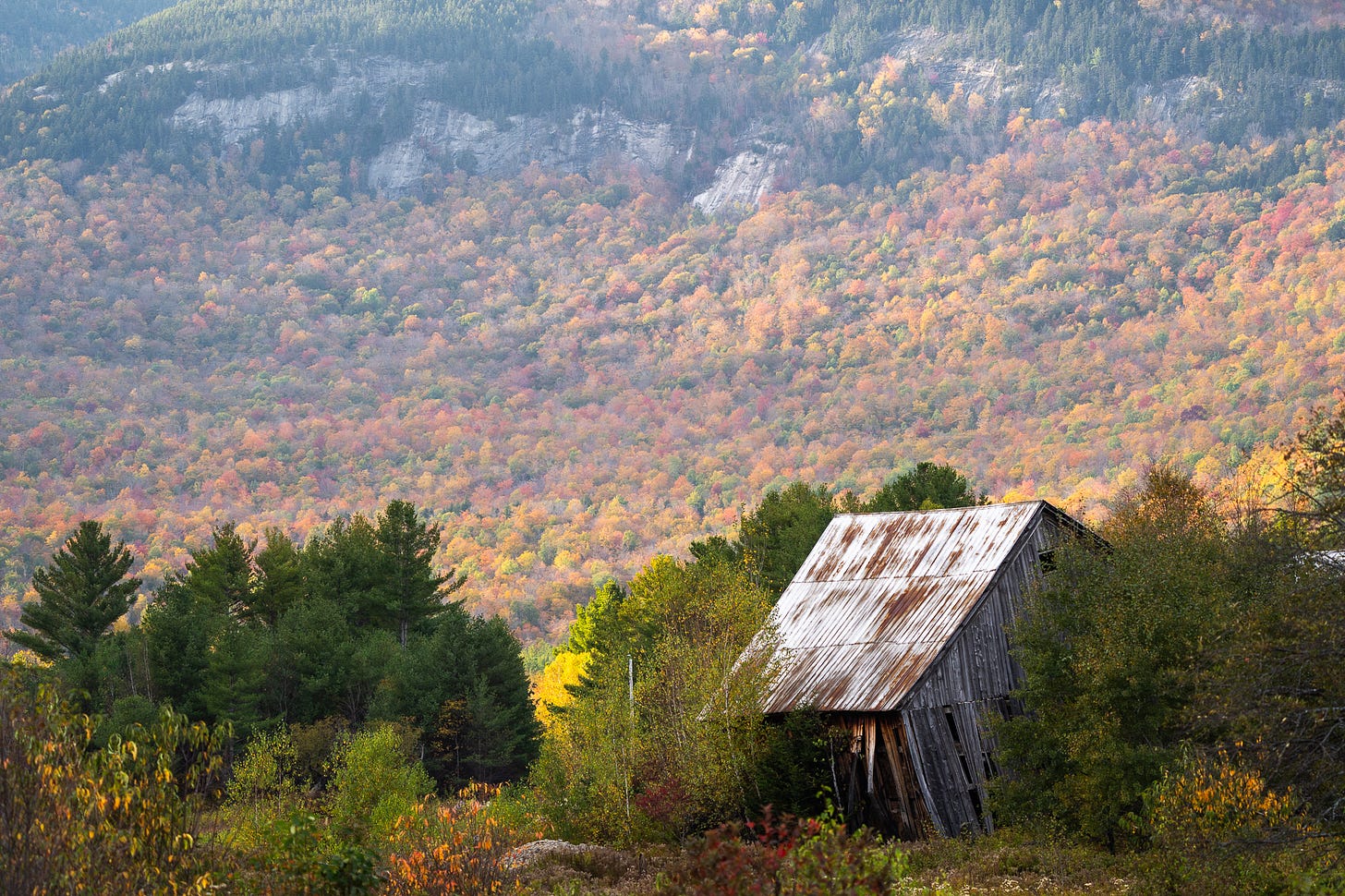
That said, there can still be great color in areas that haven’t experienced severe drought, such as along the edges of bodies of water, and also in dense forests that hold moisture more readily, which includes some of the prime areas in New England.
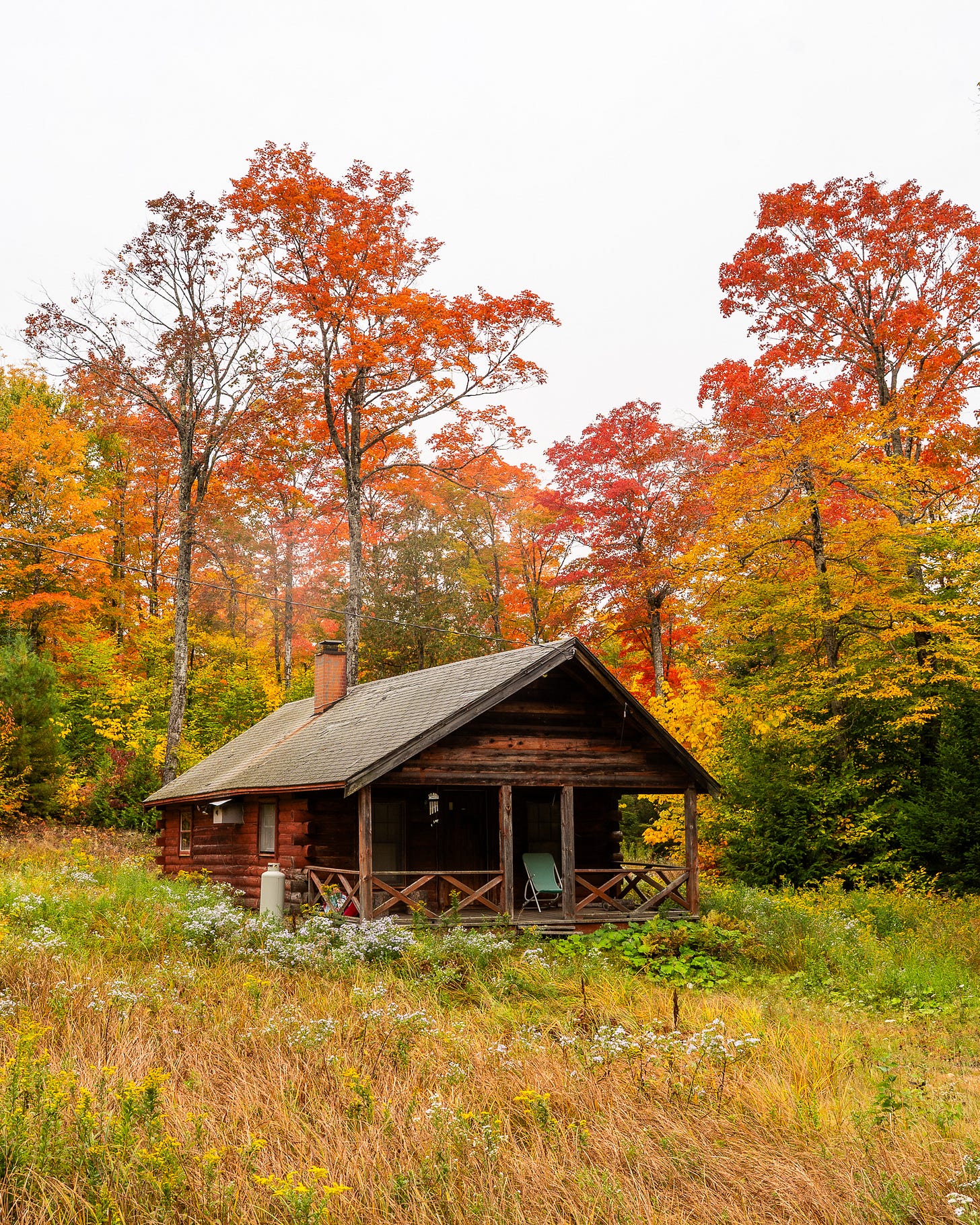
Where to Find Late Color
As the season moves along, there are still plenty of chances to find great color, both in places that have already passed their “peak” and in areas that turn later in the season.
The understory in general changes later than the forest canopy. This can be great for photographing streams and waterfalls with both colorful trees on the banks and fallen leaves all around.
Sadly, beech trees, which used to be a wonderful tree species for understory color in all regions of New England, are dying out quickly because of two plagues, beech bark and leaf rust disease.
Even later in the fall cycle, I find bare trees very attractive. They start showing the beautiful branches and structure that have been hiding all summer. Trees with a few leaves hanging on, such as the one above, along with some green grass, show the change in seasons nicely.
And, who says leaves need to be on a tree to make a good photograph? I love the look of fallen leaves on the ground or in the water. To me, they create a wistful, quiet mood that reflects the ephemeral nature of the seasons.
Because fir trees and oaks dominate the coastal plains, and colorful species like maple, birch, ash, and aspen are less common, the regions outside the northern and mountainous areas usually show a softer, more muted palette with patches of color rather than sweeping displays. That said, you can still find pockets of color and beautiful scenes if you know where to look.
Oaks, the dominant trees in much of Central and Southern New England, turn a rich, rusty orange after the maples and birches have shed their leaves. They hold their color well into late fall, and when paired with the golden tones of late-season grasses, they create a subtle but beautiful display through late October and even into November.
Blueberry barrens turn crimson red in late fall along the coast of Downeast Maine, where cultivated fields are the most extensive.
That does it for “when” to look for fall foliage. I hope everyone got some useful information that helps them plan for the upcoming season, which is rapidly approaching! I’m already seeing colorful leaves here in Southern Maine.
Tomorrow, we’ll dive into the “where”, sharing an extensive location guide with some of the best spots to experience stunning fall colors in Northern New England. As I said before, even if you don’t intend to visit these areas, there still might be good information in this section for you.
Prints of the images in this article can be found on my website. Although all of our autumn photography workshops are full this year, you can browse other workshops and look for next year’s here.


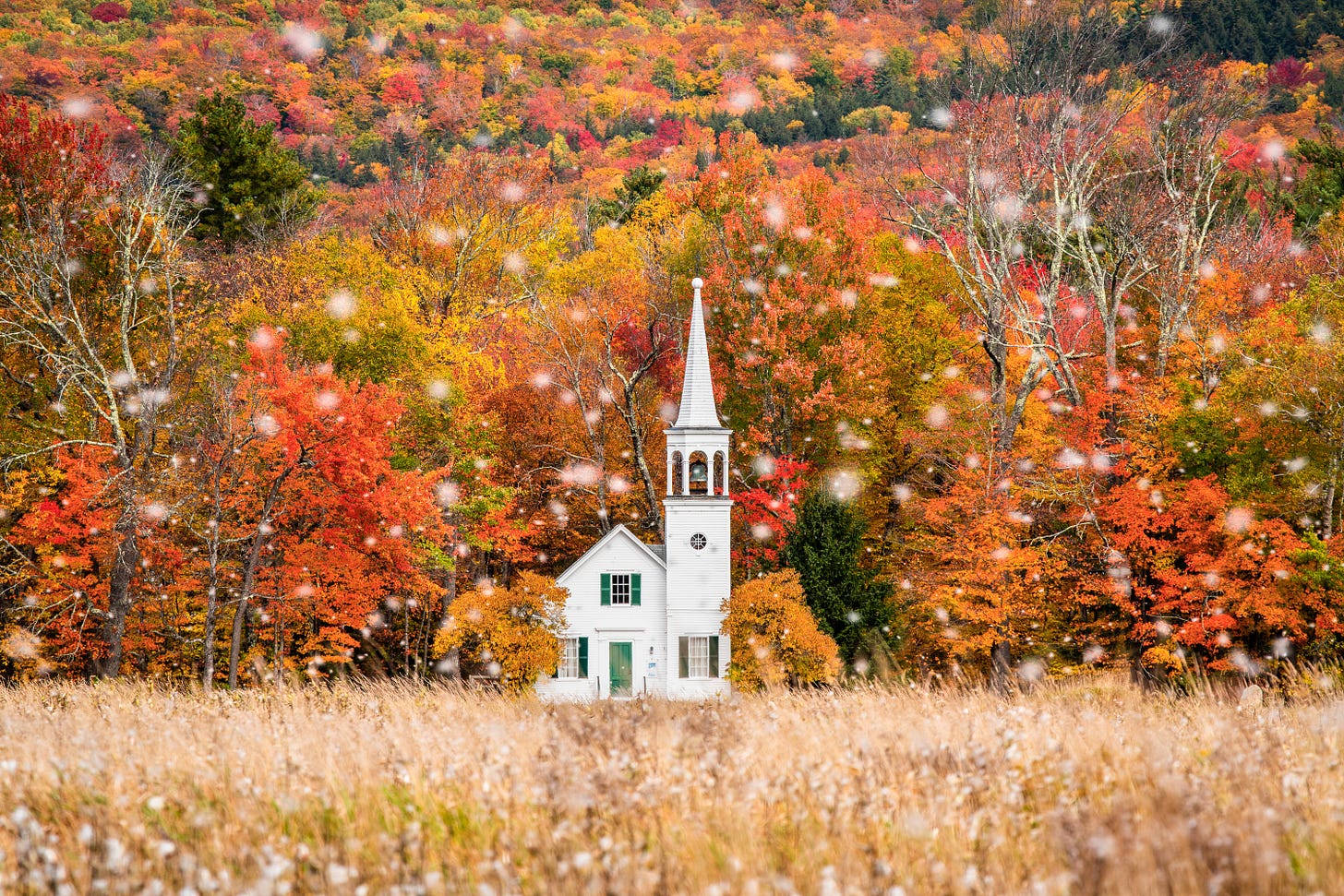
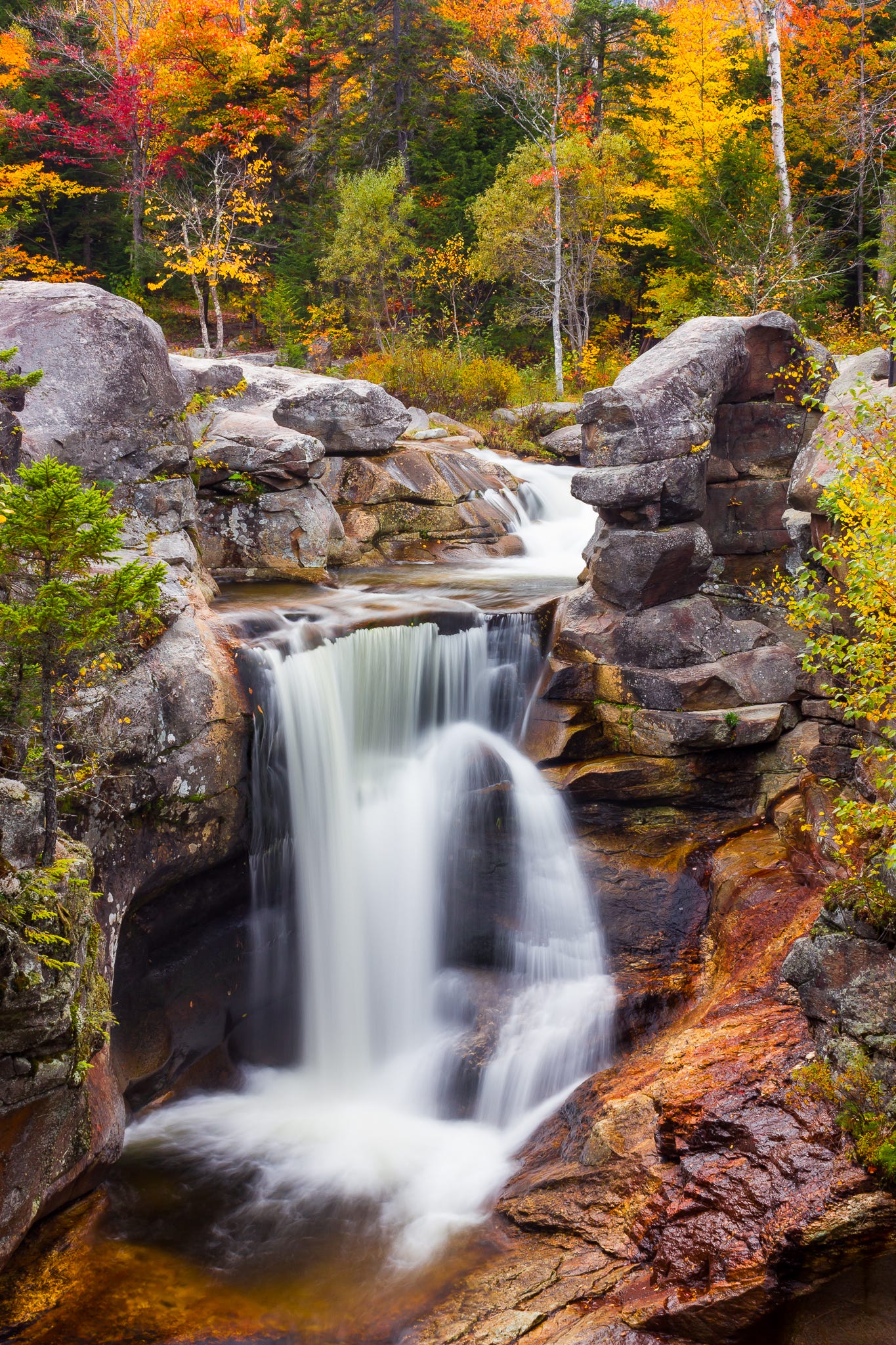
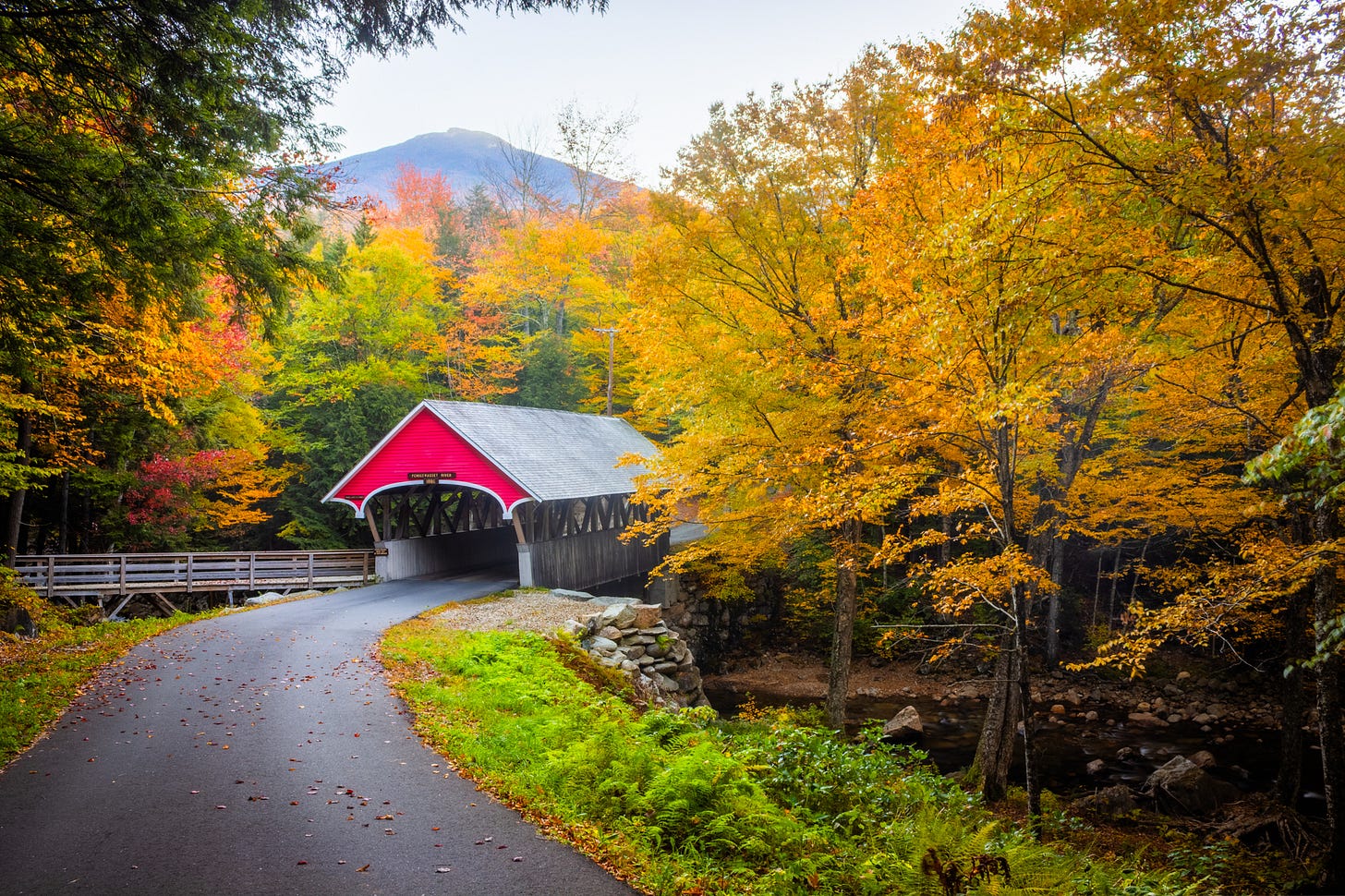
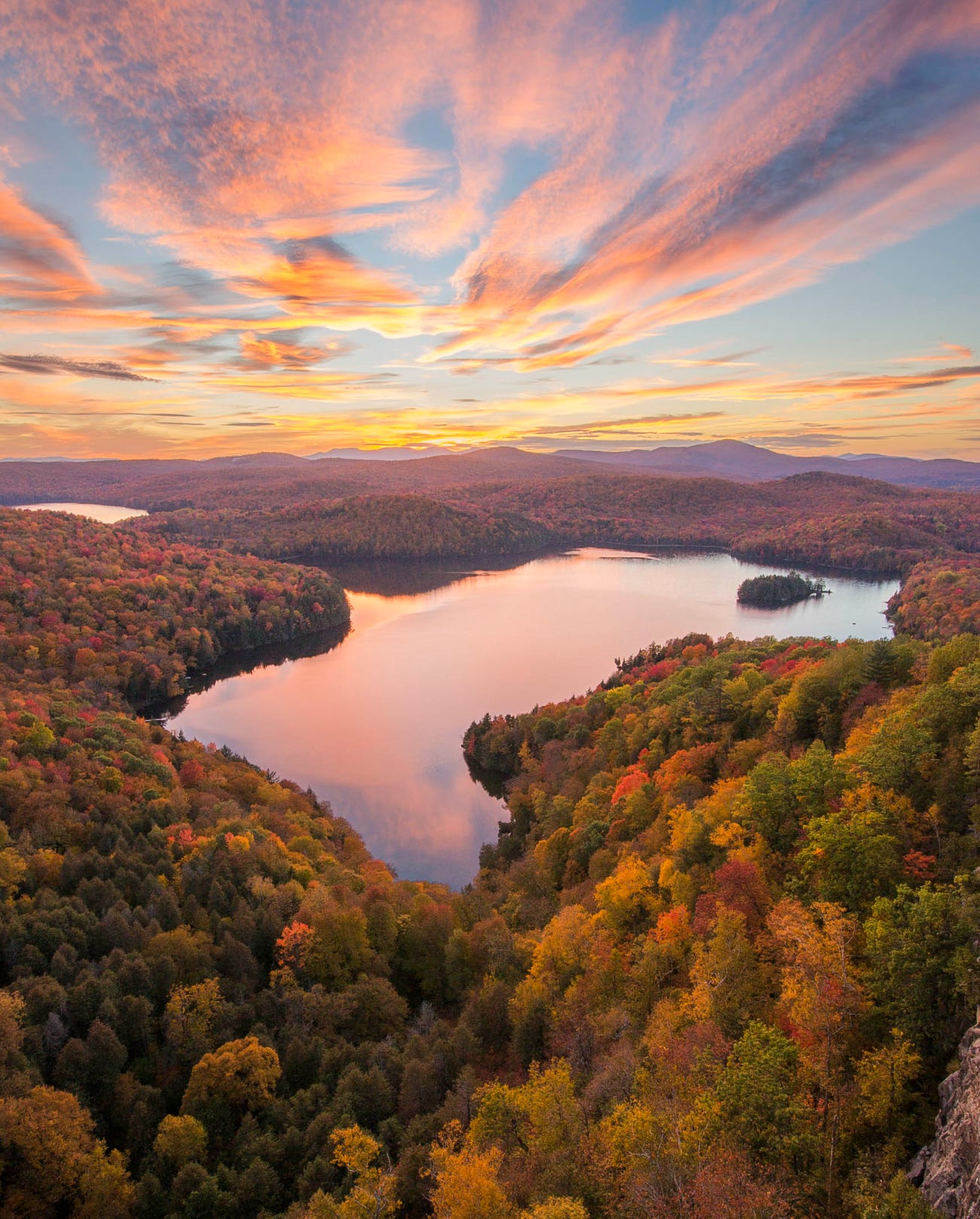
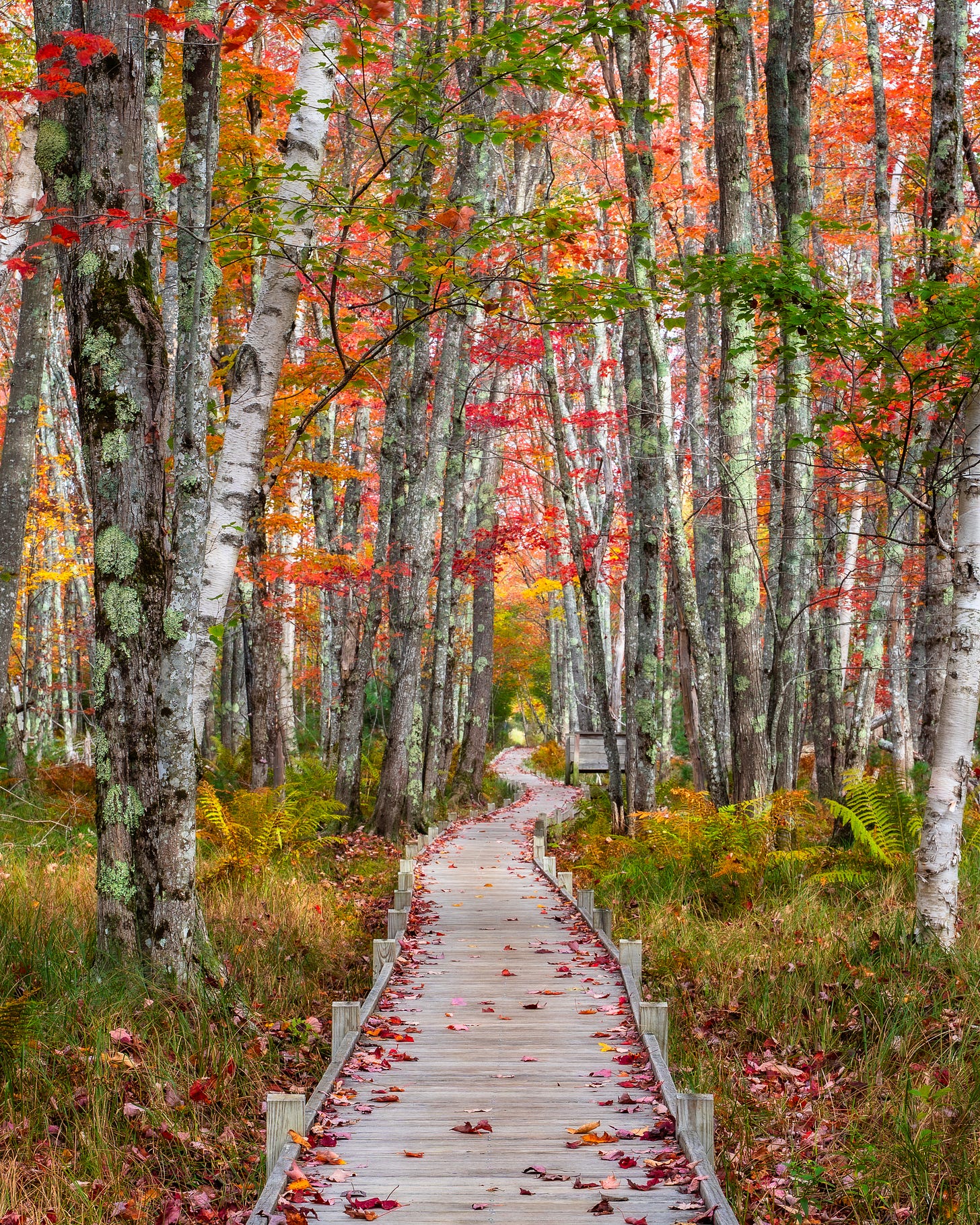

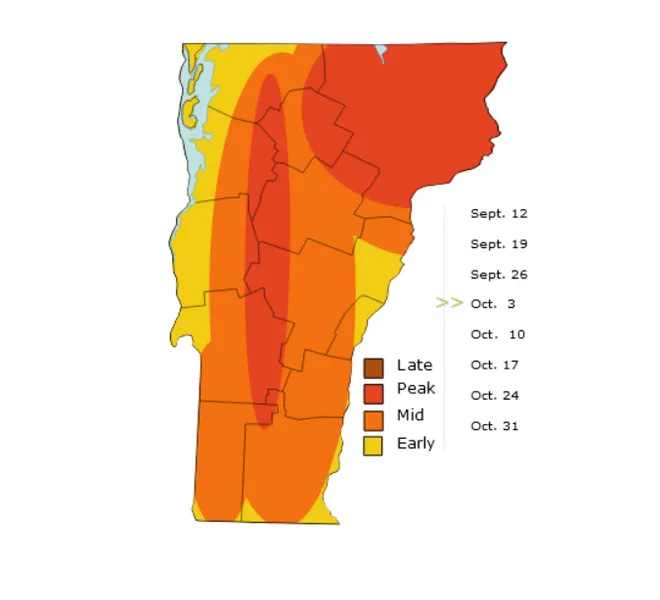
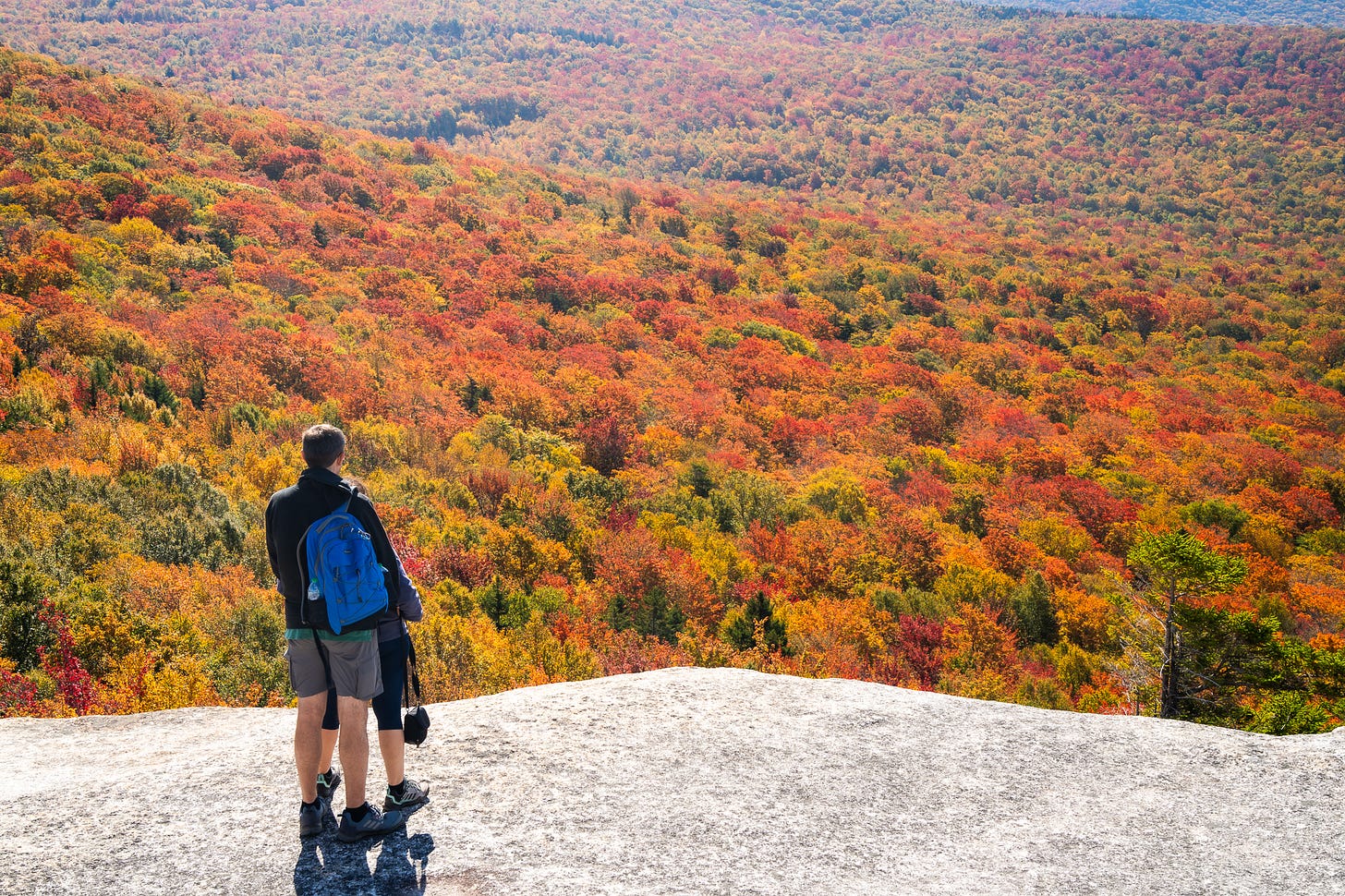

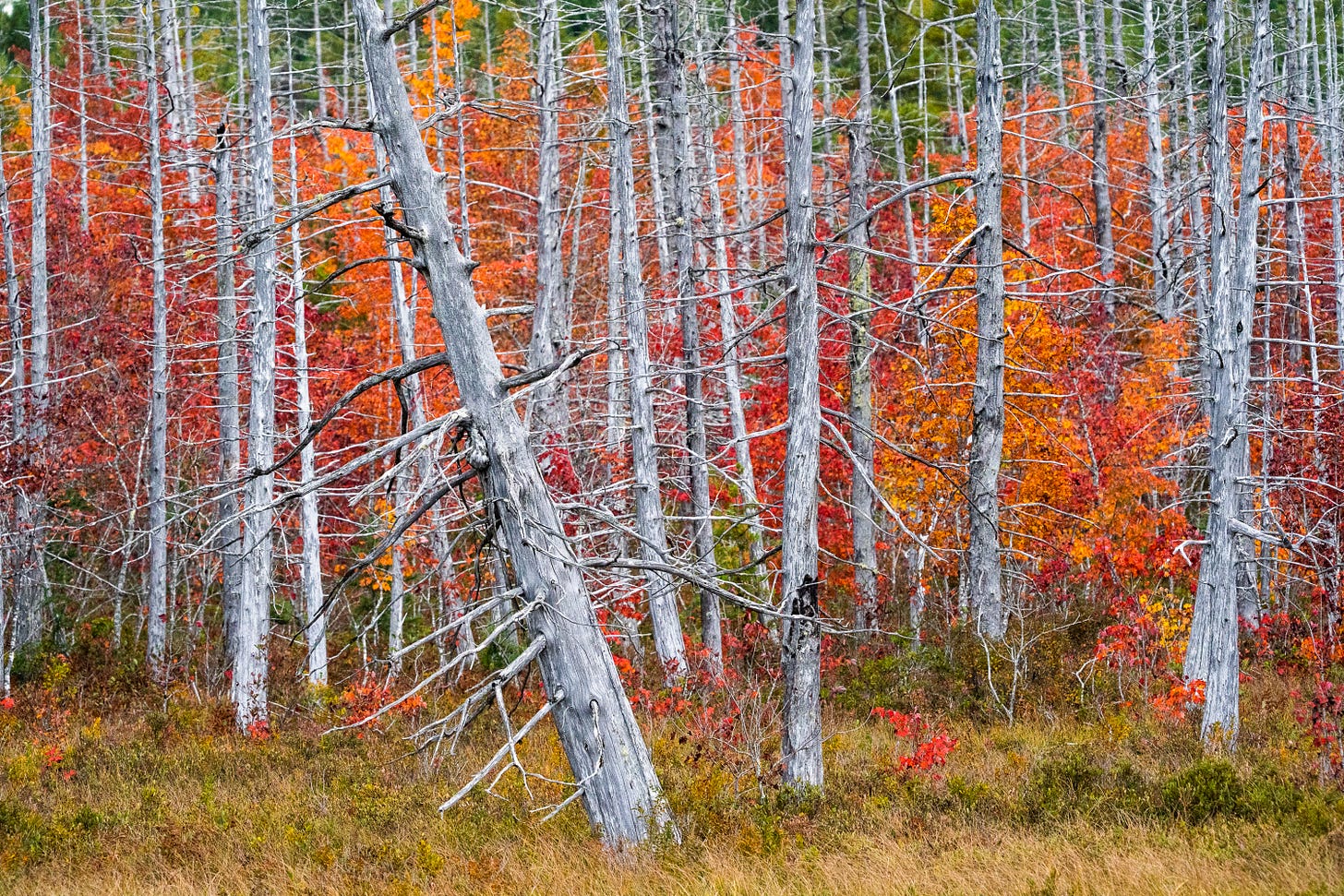
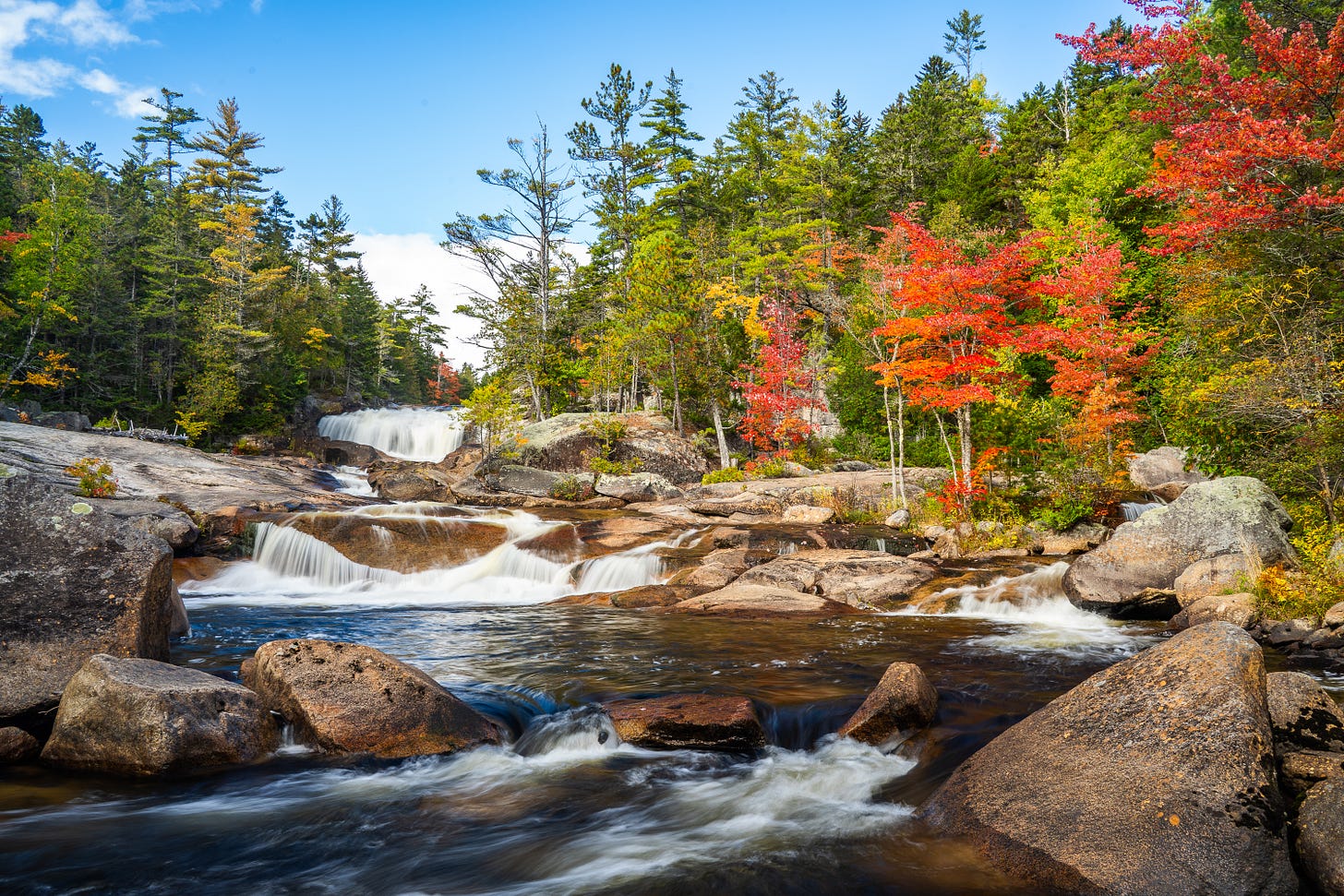
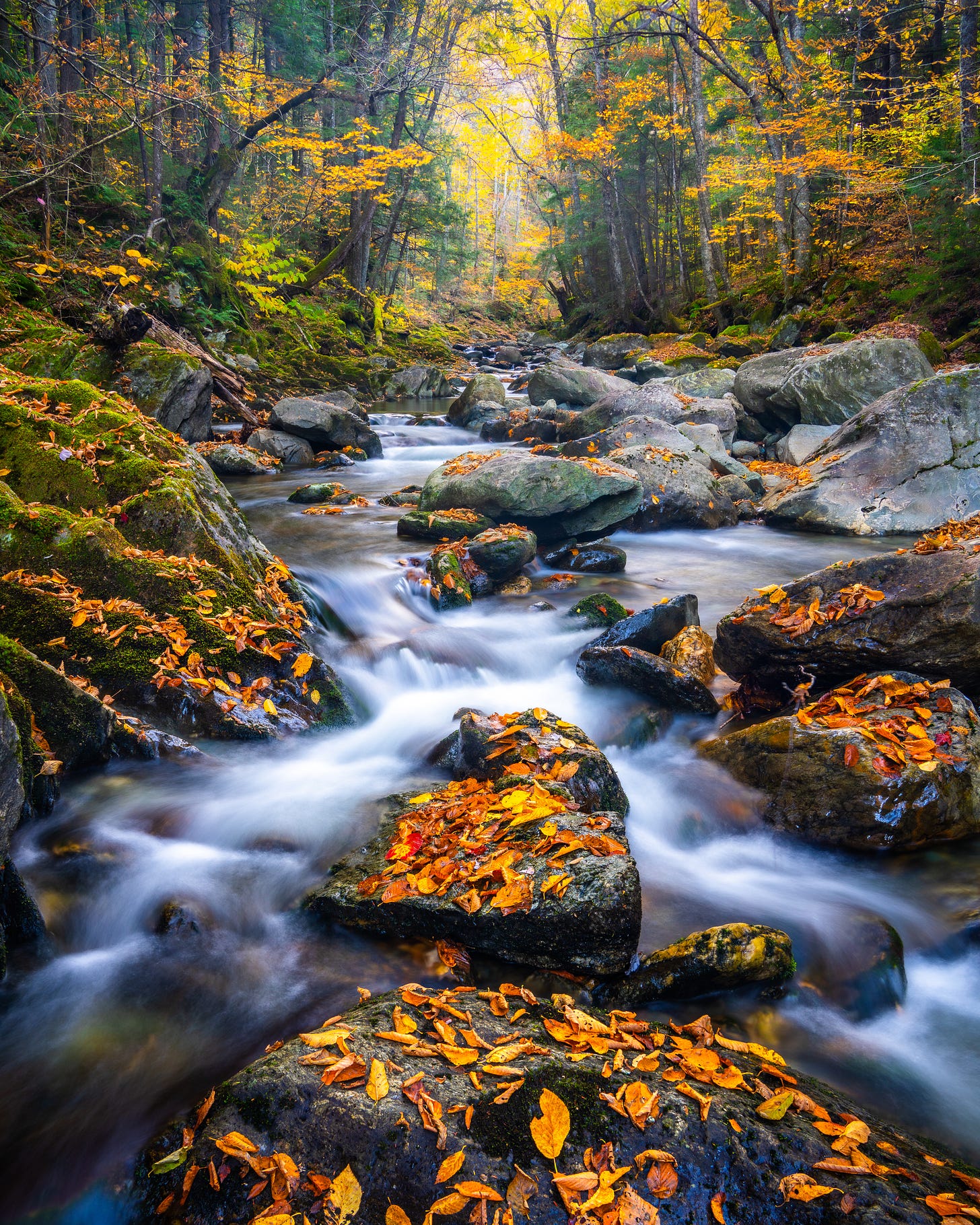
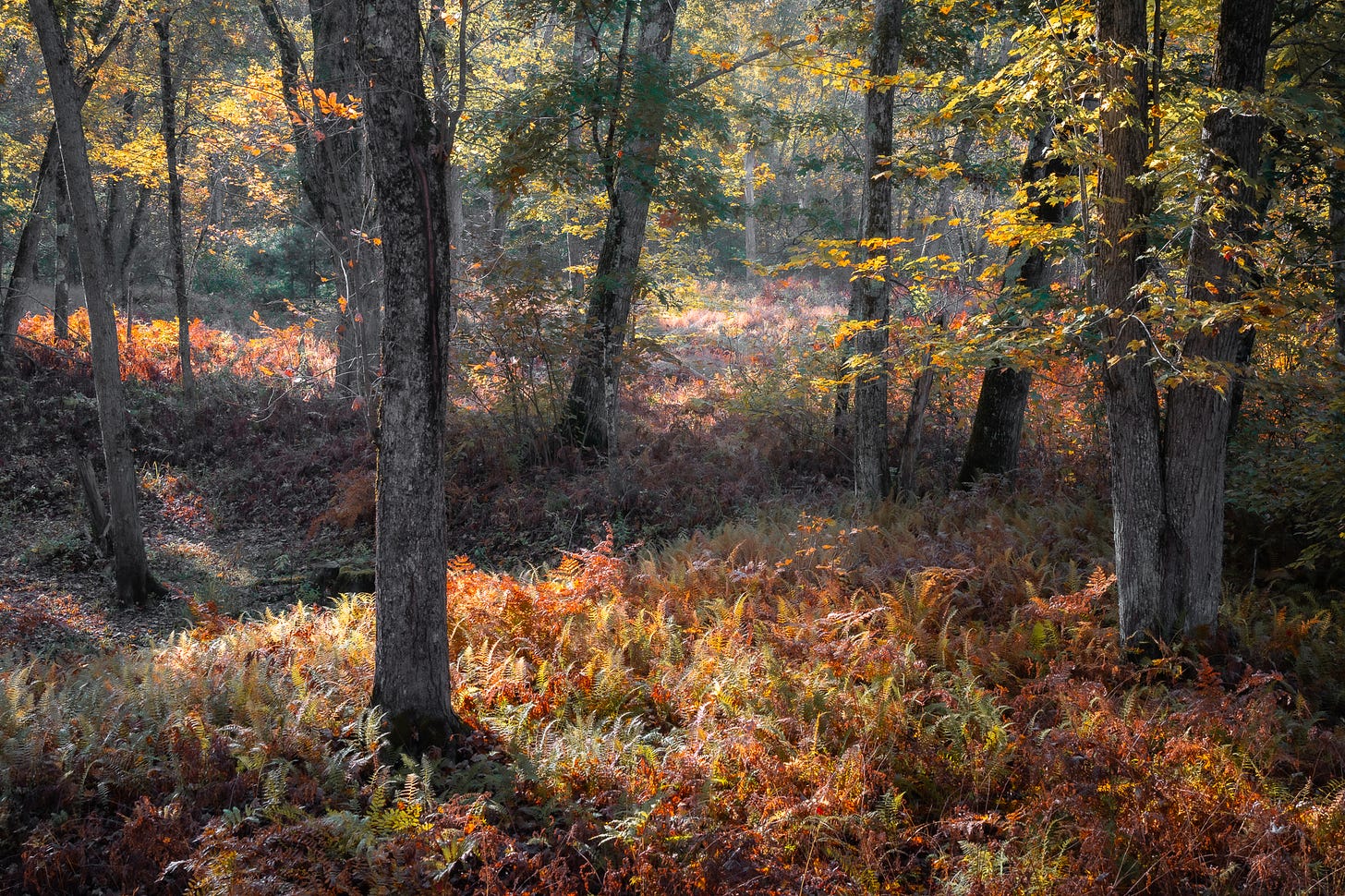
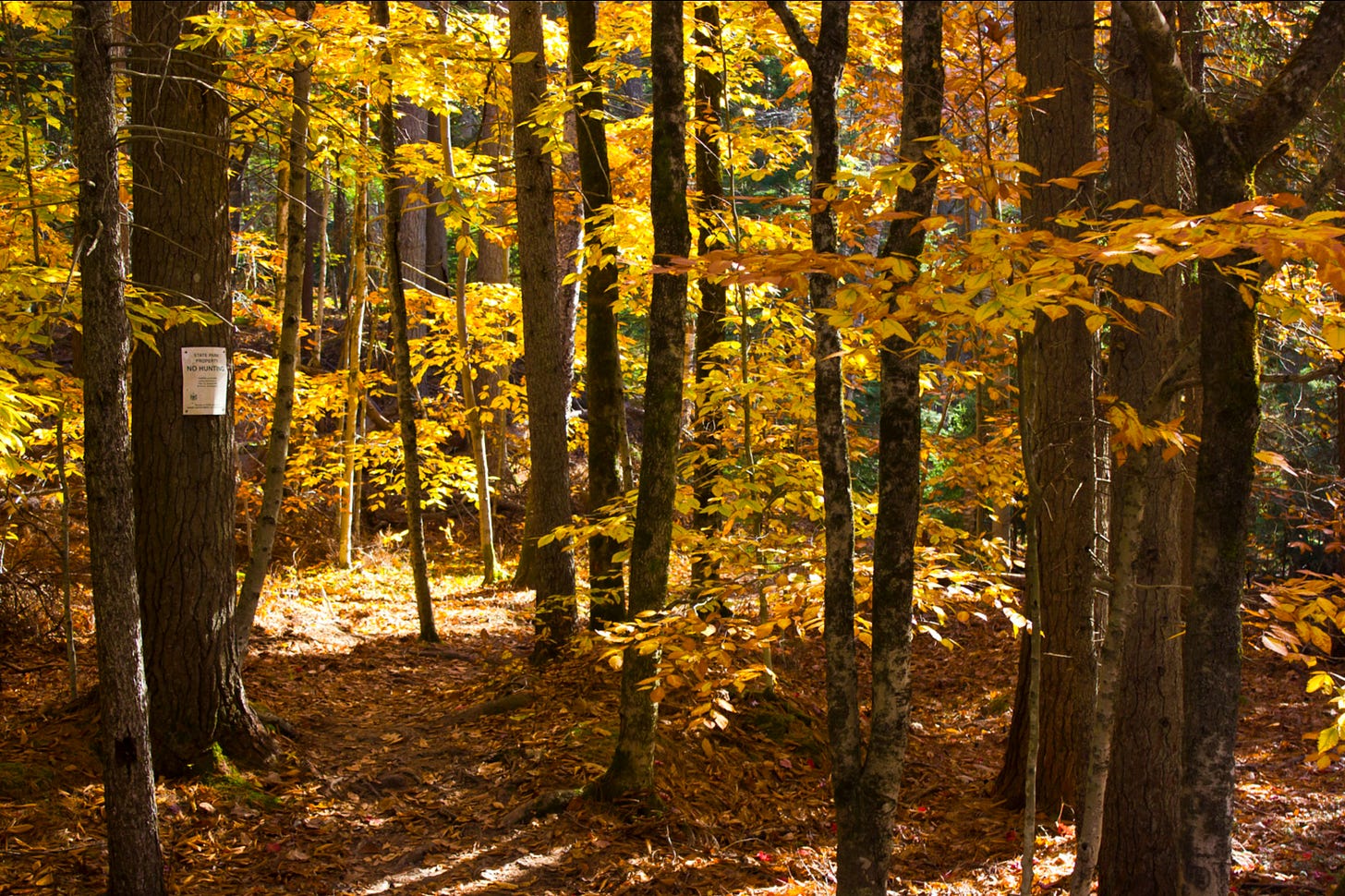
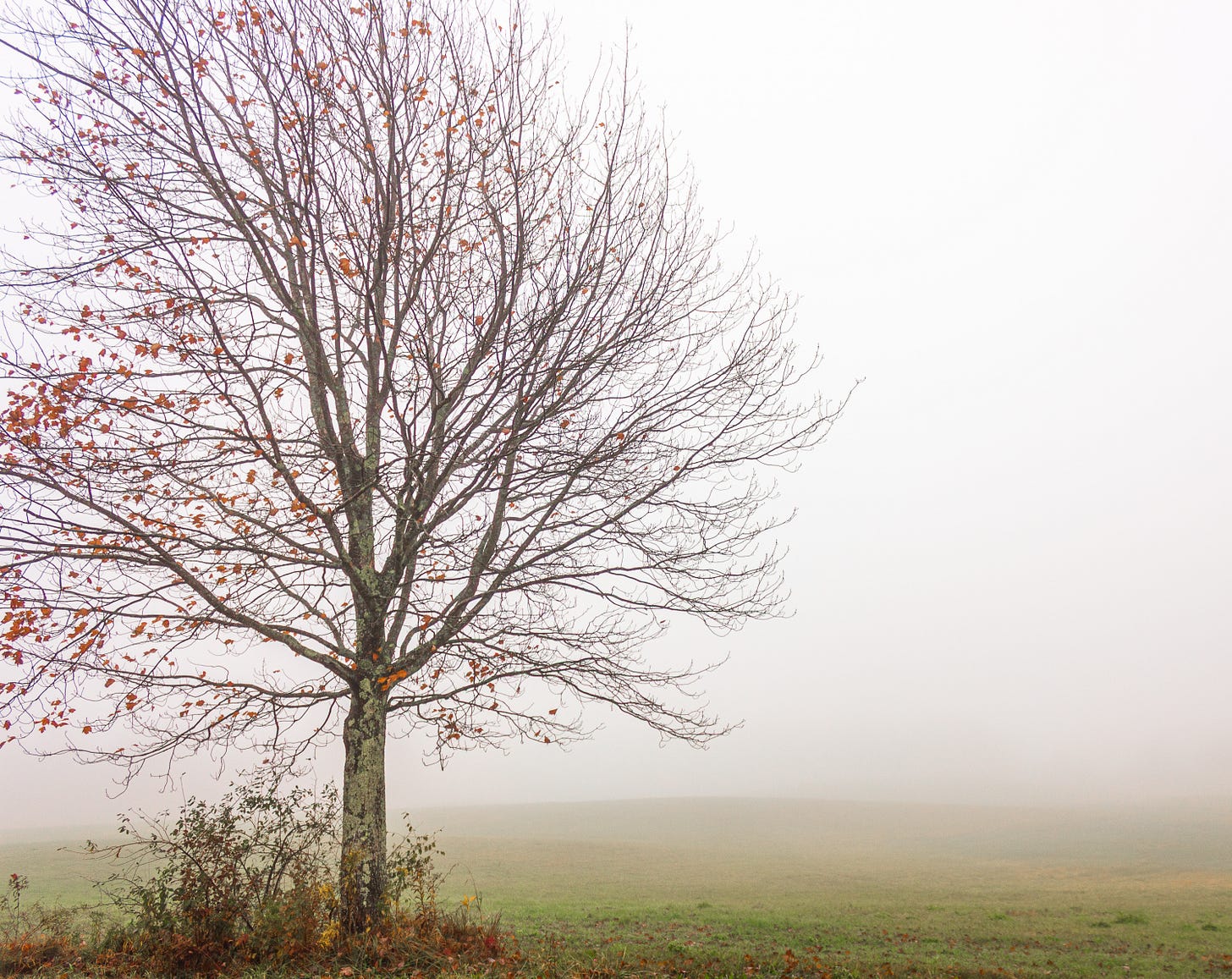
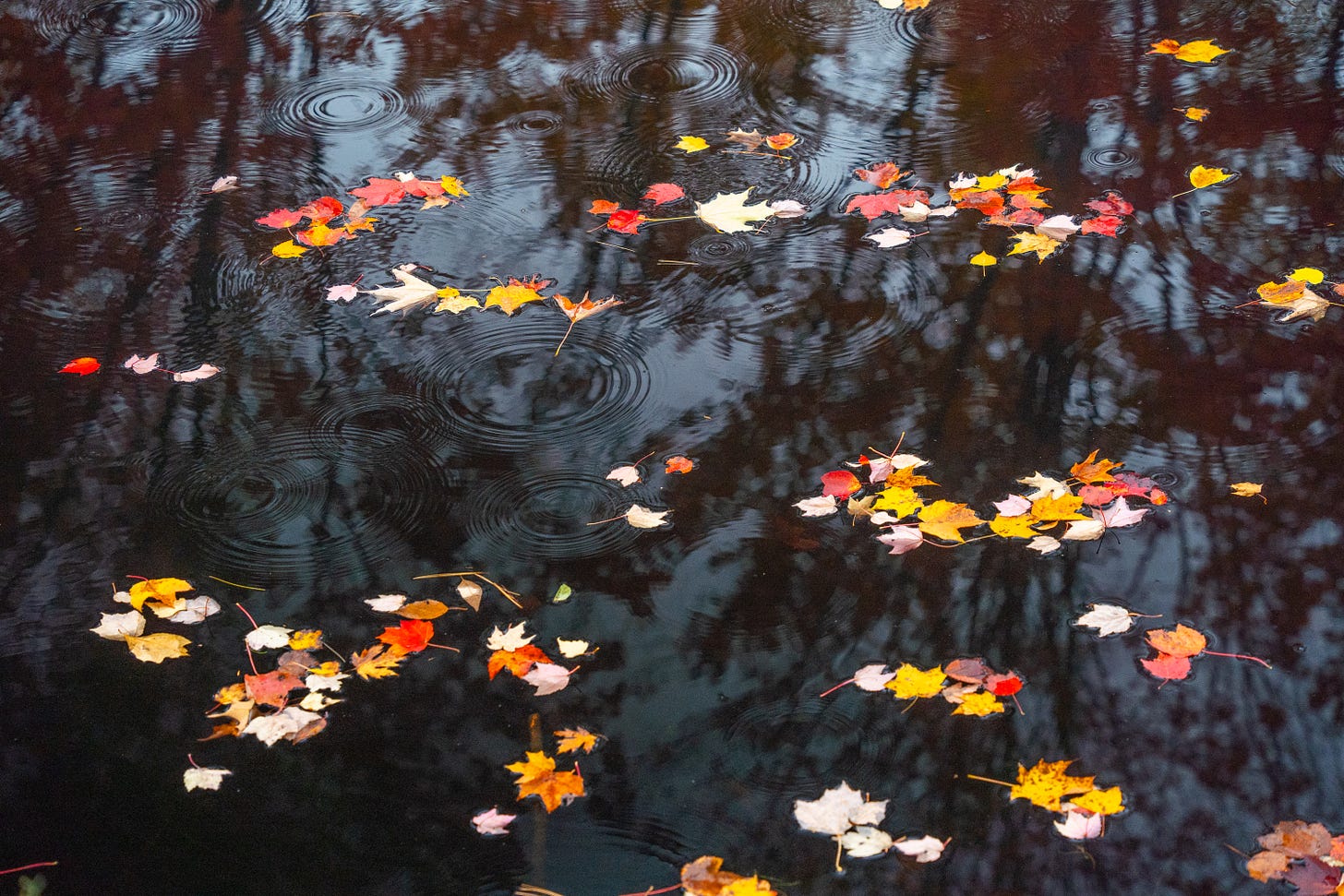

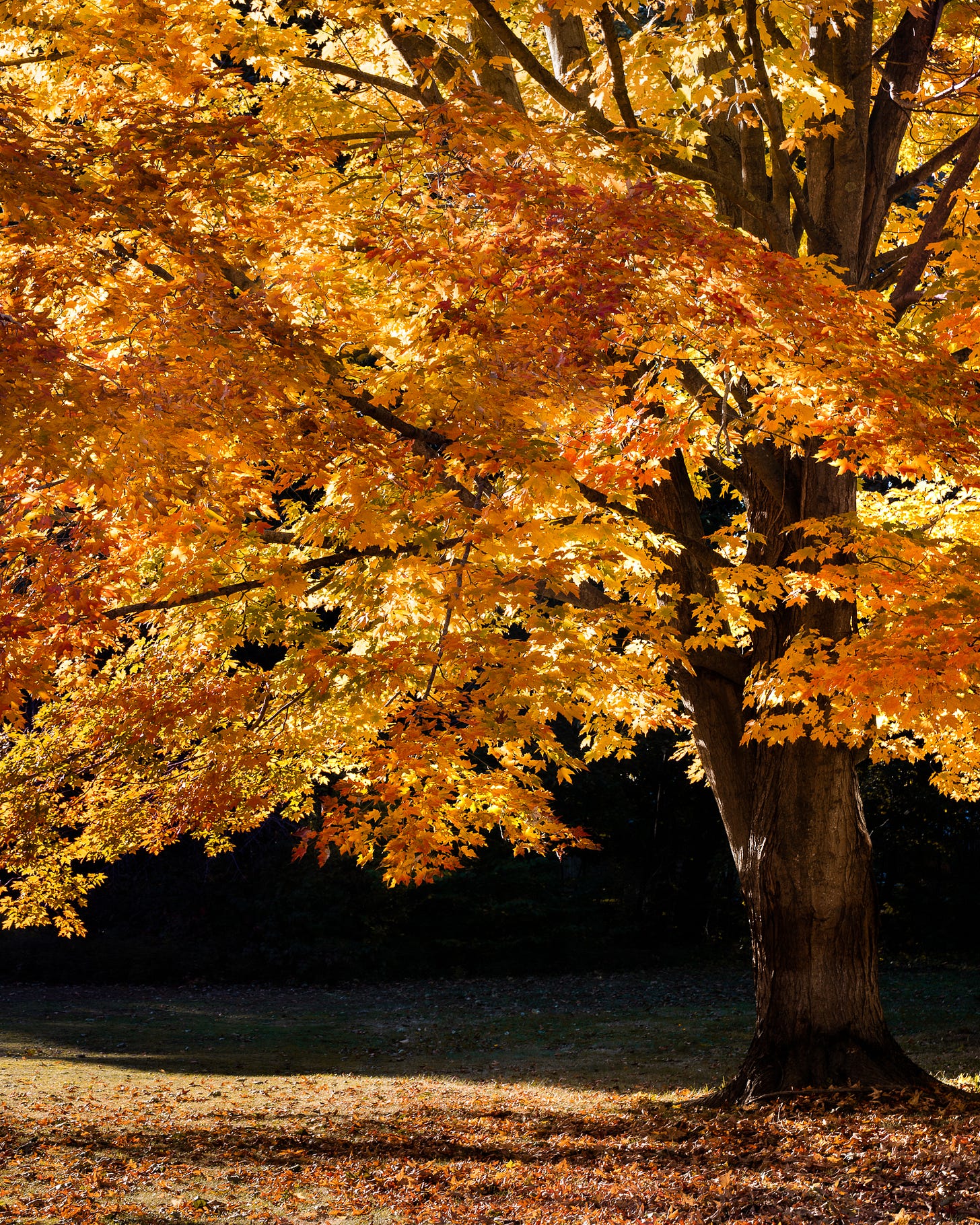
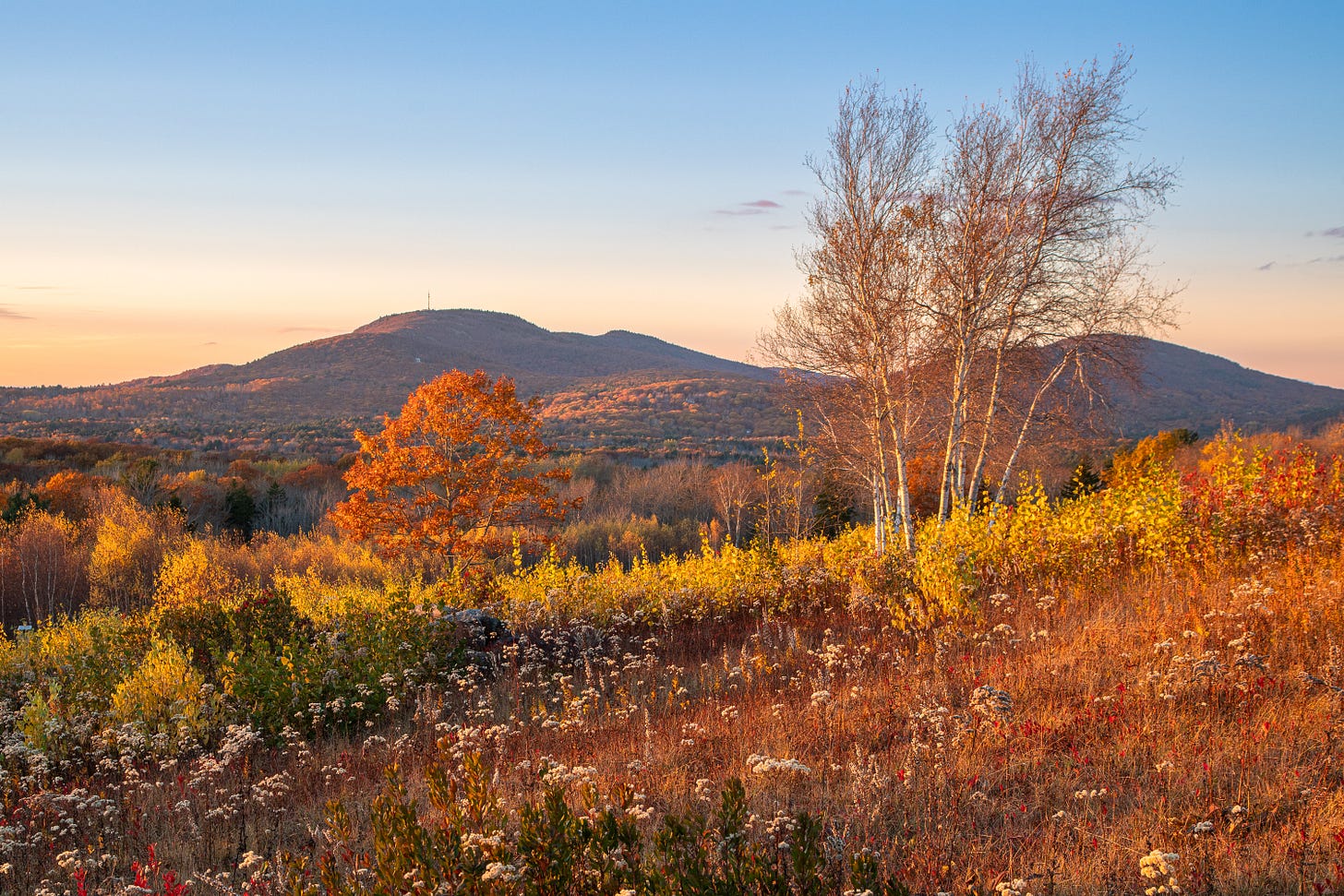
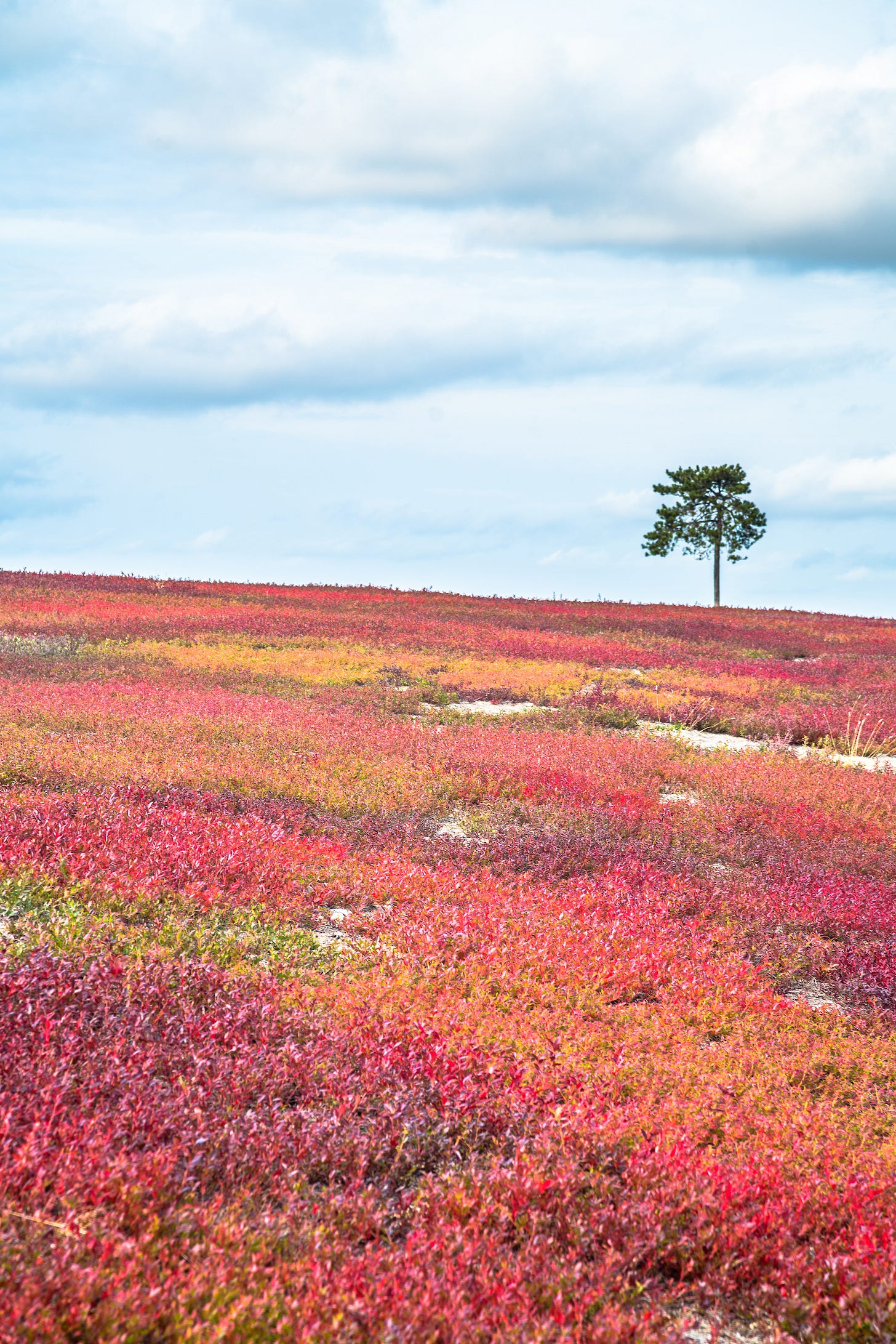

Stunning photos!
I love all your photos! Wonderful! 🥰✨